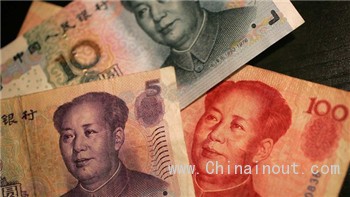上周,當(dāng)中國(guó)央行觸發(fā)自上世紀(jì)90年代以來(lái)最大的兩個(gè)人民幣單日最大跌幅時(shí),很多人都敏銳地宣告匯率戰(zhàn)爭(zhēng)重新開(kāi)始。自2008年金融危機(jī)以來(lái),匯率戰(zhàn)爭(zhēng)已經(jīng)成為全球經(jīng)濟(jì)的特征之一。
但是,如果北京此舉引發(fā)美國(guó)以及其他國(guó)家政府的“匯率戰(zhàn)士”可以預(yù)見(jiàn)的政治回應(yīng)的話,這便忽視了一個(gè)如今在很多貿(mào)易經(jīng)濟(jì)學(xué)家看來(lái)日益得到充分證明的事實(shí):作為貿(mào)易武器的匯率跟過(guò)去不一樣了。
在一項(xiàng)對(duì)包括中國(guó)在內(nèi)的46個(gè)國(guó)家所做的新研究中,世界銀行(World Bank)的經(jīng)濟(jì)學(xué)家得出,作為推動(dòng)出口的工具,如今貨幣貶值的效果僅為上世紀(jì)90年代中期時(shí)的一半。
此外,世界銀行的經(jīng)濟(jì)學(xué)家發(fā)現(xiàn),國(guó)家融入全球經(jīng)濟(jì)的程度越深——上世紀(jì)90年代以來(lái)中國(guó)令人矚目地實(shí)現(xiàn)了這種融入——匯率變化對(duì)出口可能帶來(lái)的影響就越小。
該研究的作者之一米歇爾脠咜(Michele Ruta)稱(chēng),對(duì)于壓低本幣匯率以尋求在國(guó)際貿(mào)易中獲得競(jìng)爭(zhēng)優(yōu)勢(shì)的國(guó)家而言,“關(guān)于貶值能帶來(lái)多少影響,預(yù)期與實(shí)際情況存在差異”。他稱(chēng),如今現(xiàn)實(shí)情況是,多年的數(shù)據(jù)表明,貶值的影響很可能比過(guò)去低得多。
造成這種情況的原因有很多。但是,魯塔及其同事稱(chēng),最大的原因是,過(guò)去20年全球供應(yīng)鏈得到發(fā)展以及如今很多產(chǎn)品都是由很多產(chǎn)自不同國(guó)家的部件組裝而成的。
其結(jié)果是,對(duì)于包括中國(guó)在內(nèi)的許多經(jīng)濟(jì)體而言,計(jì)算貶值影響的方法變得復(fù)雜得多了。
匯率走低仍然會(huì)降低很多商品的出口價(jià)格、從而提升它們?cè)诤M獾母?jìng)爭(zhēng)力,與此同時(shí)增加進(jìn)口的成本。對(duì)于一些簡(jiǎn)單的產(chǎn)品,比如一瓶由瑪格麗特河(Margaret river)產(chǎn)區(qū)的葡萄釀造而成的澳大利亞西拉(Shiraz)葡萄酒,這一論斷仍然成立、并且仍是重要的。澳元走低將降低這瓶葡萄酒的出口價(jià)格,提高它對(duì)海外消費(fèi)者的吸引力,同時(shí)提高澳大利亞從法國(guó)或智利的競(jìng)爭(zhēng)對(duì)手進(jìn)口葡萄酒的價(jià)格。
但是對(duì)于更加復(fù)雜的產(chǎn)品,比如很多在中國(guó)組裝的電子產(chǎn)品,匯率走低的實(shí)際影響計(jì)算起來(lái)要困難得多。以智能手機(jī)為例,屏幕可能是從日本進(jìn)口的,主芯片可能是從韓國(guó)進(jìn)口的,其他部件在東南亞、歐洲和美國(guó)采購(gòu)。所以,盡管人民幣貶值理論上降低制成品銷(xiāo)往海外的價(jià)格,但它也提高了進(jìn)口部件的成本。(中國(guó)進(jìn)出口網(wǎng))

When China’s central bank last week triggered the two biggest single-day falls in the renminbisince the 1990s, plenty of people were keen to proclaim a resumption of the currency warsthat have been a feature of the global economy since the 2008 financial crisis.
But if Beijing’s move prompted a predictable political response from currency warriors inWashington and other capitals, it ignored what many trade economists see as an increasinglywell-documented fact: currencies are not the trade weapon they once were.
In a new study of 46 countries including China, economists at the World Bank found thatcurrency devaluations were these days only half as effective a tool for boosting exports asthey were in the mid-1990s.
Moreover, the World Bank economists found the further countries became integrated into theglobal economy — as China has done in spectacular style since the 1990s — the less theeffect was likely to be of any currency changes on their exports.
For countries that weaken their currencies to seek competitive advantage in global tradethere is a “distinction between the perception of the impact of a depreciation and the actualimpact a depreciation can have”, says Michele Ruta, one of the study’s authors. The realitytoday, he says, is that years of data show the impact is likely to be much less than it used tobe.
There are a number of reasons for that. But the biggest, say Mr Ruta and his colleagues, is thedevelopment of global supply chains in the past two decades and the reality that manyproducts today are agglomerations of parts made in many different countries.
The result is a much more complex calculus for many economies, including China.
Weaker currencies still lower the cost and therefore raise the international competitiveness ofmany goods exports while increasing the cost of imports. For something as simple as a bottleof Australian Shiraz from grapes grown on Margaret river vines, that reality still holds andmatters. A weak Australian dollar will lower the cost of an exported bottle and make it moreattractive to offshore consumers. It will also increase the price of imports into Australia ofFrench or Chilean rivals.
But for more complex products, like many of the electronic items assembled in China, the realimpact is far more difficult to calculate.











